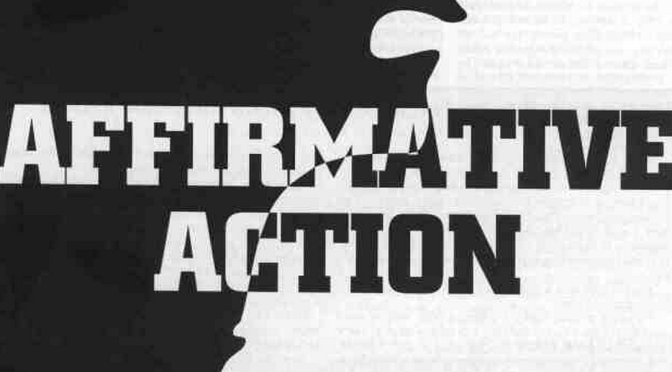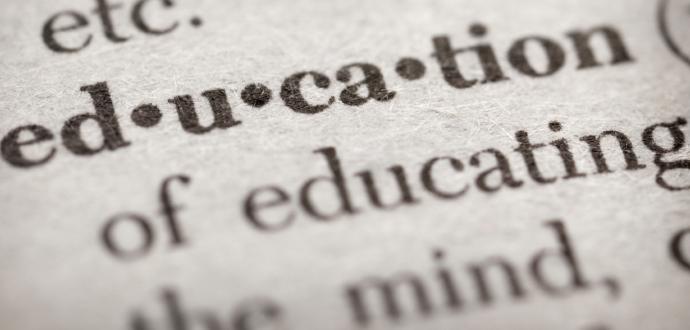Introduction:
As of now the Supreme Court of the United States holds the fate of Affirmative Action in its hands. Affirmative Action focuses on issues of employment and education, granting special consideration to minorities such as people of color and women who have been historically oppressed. In the context of education, Affirmative Action has been controversial and has been met with substantial opposition. Many critics of Affirmative Action believe that implementing such policy would give an unfair advantage to people of color. On the other hand, advocates of Affirmative Action believe the policy would only level the playing field for non-white students. Such policy is a consequence of decades of denying African Americans and Women the right to attain higher education at the same level as white males. Some students whom are white argue that Affirmative Action hurts their chances of being acceptance into college compared to their African American counterparts. The misconception is that Affirmative Action targets white students and gives “their spots” to underqualified students of color instead. For instance, the case of Fisher V. University of Texas at Austin is a good example of why this issue is so relevant today. The case looks at the University of Texas which practices Affirmative Action and a white female student who did not get accepted into the University and pins her rejection on the fact that the university considers race in it’s admissions process. With the recent passing of Justice Scalia, Affirmative Action and many other supreme court cases have garnered again the attention nationwide. This paper aims to find the effects Affirmative Action has on white students’ admission rate into public universities.
Data:
The issue of Affirmative Action has been a study of interest particularly because it has become such partisan in the world of politics. According to a study by Dale and Krueger (2011), “graduating from selective universities does not increase the earnings likelihood for middle-class whites but does significantly increase the earnings likelihood for Black and Hispanic students and those from less affluent backgrounds, so affirmative action has a direct impact on the economic future of America”. Equal access to higher education has become increasingly more important in terms of reaching economic stability. This claim about Affirmative Action underlines what is at stake for communities of color regarding their economic future. Race proves to be a barrier for upward mobility for Black and Hispanic students, so it makes sense that Affirmative Action would be pushed so hard by proponents of the policy. On the other hand, it is telling about those against the policy whose probability of earnings increasing is not impacted or negatively affected, yet there is still a great deal of opposition. Universities are now beginning to recognize the fact that there are systematic and institutional barriers for people of color, so have began adopting admission policies taking into consideration race in attempts to even the odds. The same Dale and Krueger (2011) study comments on Affirmative Actions, “quota systems became unconstitutional years ago, so we are not talking about a mechanical relationship to race in admissions. There are no black slots in a class, nor should there be.” This quote aims to challenge the notion that black students get accepted because they are black rather than their merits compared to white students’. President Lee C. Bollinger of Columbia University and once president of the University of Michigan addressed myths about Affirmative Action in a forum about “Education and the Law”. Bollinger states, “This notion that enormous numbers of whites are being denied admission because of the preferential treatment of under-represented minorities is simply false. In fact, admissions policies such as Michigan’s do not meaningfully affect a white student’s chances of admission. The numbers of minority applicants are extremely small compared to the numbers of white students who apply to universities across the country.” The debate surrounding Affirmative Action often becomes an ideological debate of whether it is right or wrong to consider race, but the actual implications turn out to be very minimal towards white students with all things considered. In a collaboration with other educators, Bollinger analyzed nationwide statistics concerning admission to top universities, “they determined that even if all selective universities implemented a race-blind admissions system, the probability of being admitted for a white student would only go from 25 percent to 26.2 percent.” Yet, even after many similar conclusions critics of are still in denial.
The correlation between education and race is apparent specifically analyzing the disproportionate job market. According to the U.S. Commerce Department, “There are 2.6 million unemployed Black civilians and 114 million employed White civilians (U.S. Bureau of the Census, 2011). Thus, even if every unemployed Black worker in the United States were to displace a White worker, only 2% of Whites would be affected. Furthermore, affirmative action pertains only to job-qualified applicants, so the actual percentage of affected Whites would be even smaller. The main sources of job loss among White workers have to do with factory relocations and labor contracting outside the United States, computerization and automation, and corporate downsizing.” The argument that black people will take spots in Universities like black people will take the jobs white people are competing for is not supported by the data above. The impact black workers have on the “white job market” is very minimal and telling about how little Affirmative Action would affect white workers if what they argue were to be true. Instead the data suggests that the impact of Affirmative Action on white workers is small because black workers only represent a small portion of the job market as a whole. Toure (2012) agues, “Because intergenerational mobility is tied to college attendance and joining America’s leadership is linked to admission to the top selective universities and graduate programs, the removal of affirmative action would only increase the already overwhelming whiteness of the upper sector of American society.”
The impact Affirmative Action has on Black and Hispanic students is substantial. The study by Quinonez (2005) found, “…without affirmative action the acceptance rate for African-American candidates likely would fall nearly two-thirds, from 33.7 percent to 12.2 percent, while the acceptance rate for Hispanic applicants likely would be cut in half, from 26.8 percent to 12.9 percent.” Similarly, Munguia (2015) points to a 2013 University of Washington study where “researchers looked at the effect race had on admissions and saw a 23 percentage point drop in the chance of admission for minority students in states with bans, compared with a 1 percentage point drop in other states, relative to non minority students.” Yet, the conversation about taking action on Affirmative Action is still received with pushback. A Harvard professor Jennifer Hochschild approaches Affirmative Action as a Cultural War, hence the title of her research. Hochschild (2011) claims, “To some, the American dream is necessarily individualist. The ideology is intended to create a structure within which each person can rise or fall according to his or her merit alone. Some individualists reluctantly support affirmative action on the grounds that it is a necessary way station on the path from racial domination to race-blind individualism.” This ideology is what I believe is at the core of those opposing Affirmative Action, but as Hochschild argues, “Until the two races are equal in political power, economic means, social status, and cultural autonomy, equality of opportunity does not exist in the United States and calls for symmetry are a mere pretense for continued domination.”
Conclusion:
The aim of this paper was to better understand how Affirmative Action specifically impacts the admission of white students into Universities. The studies find that Hispanics and Black students are the main beneficiaries from Affirmative Action. Specifically, it increases the admission of students of color that reflects a more accurate representation demographically. In contrast, the white student population seems to be unaffected from Affirmative Action. The studies do suggest that white students are not affected because most are overly represented in higher educational institutions. Affirmative Action, according to the data collected by the studies, closes the gap that exists within students of color. The studies also reject the notion that black unqualified students take away the opportunities of white qualified students. The importance of Affirmative Action is high for those who advocate for equality amongst students of color. For a long time, it was thought that Affirmative action had negative impacts for white students, rather that notion has been slowly brought to an end with the extensive studies suggesting otherwise. The fact that the case about Affirmative Action has reached the highest court in the country is telling about how controversial the issue is. The political discourse about the issue has become partisan and rarely does the subject get addressed without either side discrediting each other’s argument. It is important to discuss the issue knowing the facts and not the false assumptions. After research about the topic I believe that Affirmative Action is beneficial for students of color and has little to no impact to white student’s acceptance into universities. I realized that Affirmative Action when implemented correctly, aims to even the playing field for all students.
Hochschild. (2001). Affirmative Action as Culture War. Princeton Publication. Retrieved from
http://scholar.harvard.edu/jlhochschild/publications/affirmative-action-culture-war
Quinones. (2005). Ending affirmative action would devastate most minority college enrollment. News at Princeton. Retrieved from
https://www.princeton.edu/main/news/archive/S11/80/78Q19/index.xml?section=newsreleases
Toure. (2012). Why we still need Affirmative Action. Times. Retrieved from
http://ideas.time.com/2012/10/12/why-we-still-need-affirmative-action/
Bollinger. (2002). Seven Myths about Affirmative Action. Columbia University. Retrieved from.
http://www.columbia.edu/content/seven-myths-about-affirmative-action-universities.html
Munguia. (2015). What happens When You Ban Affirmative Action in College Admissions. Fivethirtyeight. Retrieved from.

